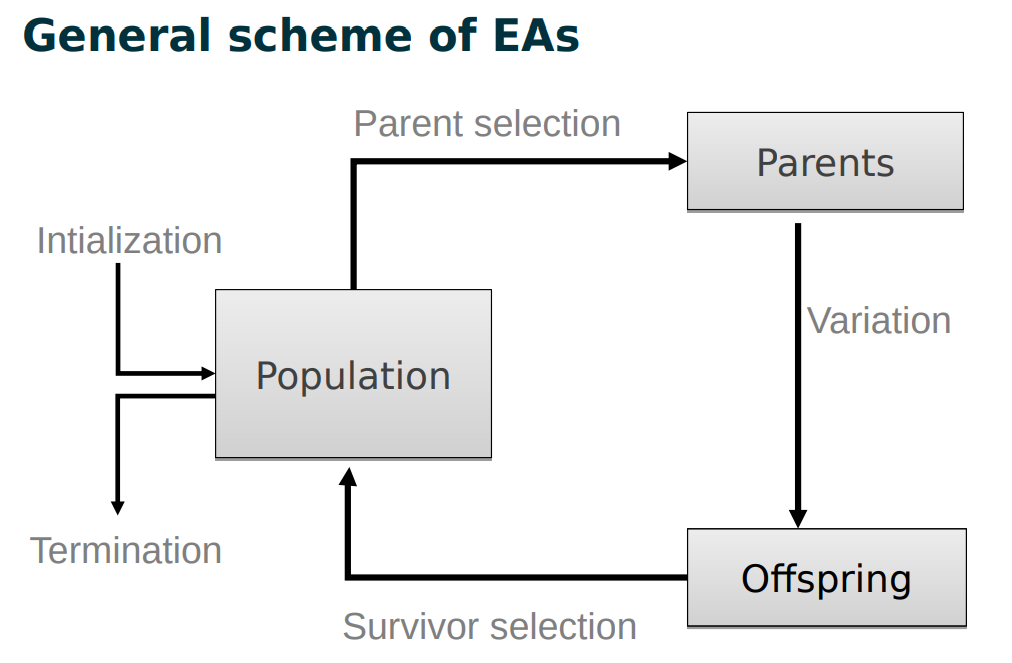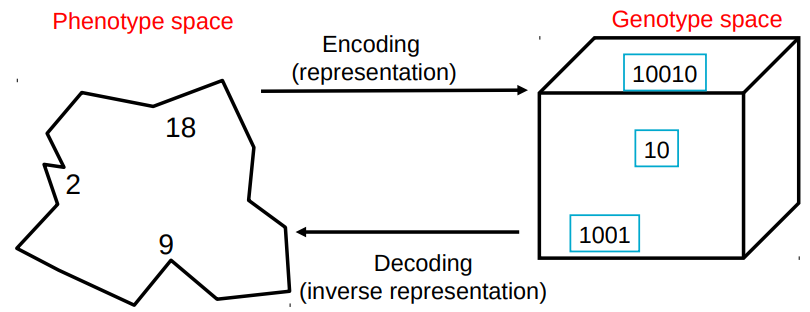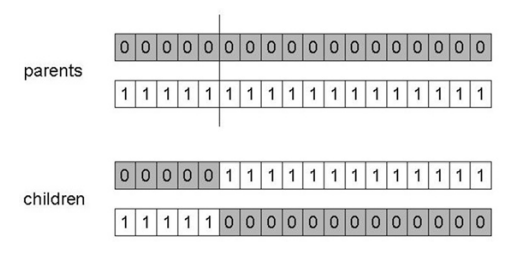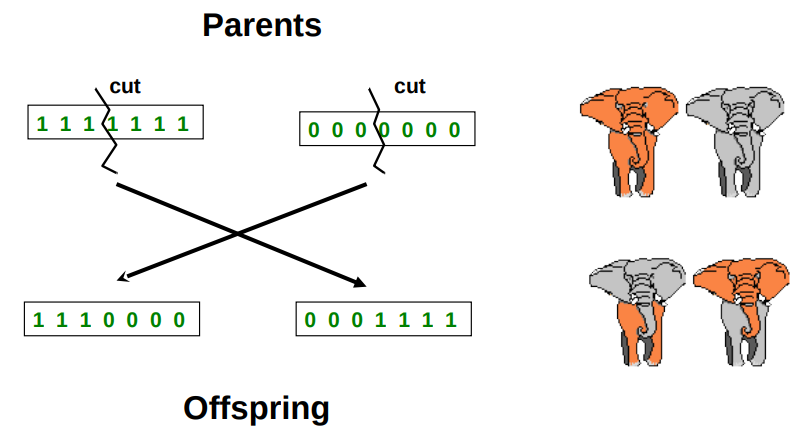Intro to Evolutionary Computing
Main EA(evolutionary algorithm) components

Two Pillars of Evolution
There are two competing forces
Increasing population diversity by genetic operators
- mutation
- recombination
Push towards novelty
Decreasing population diversity by selection
- of parents
- of survivors
Push towards quality
Representation
Phenotype: object in original problem context.
Genotype: code to denote that object (chromosome, "digital DNA")
Two mappings:
- Encoding: phenotype => genotype (not necessary one to one)
- Decoding: genotype => phenotype (must be one to one)
Most common representation of genomes:
- Binary
- Integer
- Real-Valued or Floating-Point
- Tree
- Permutation
Represent integer values by their binary code.

Fitness Function
A.k.a evaluation function, quality function or objective function.
Represents the task to solve, the requirements to adapt to. (the environment)
Enables selection (provides basis for comparison)
Assigns a single real-valued fitness to each phenotype. The more discrimination (different values) the better because the fitness value is used as basis for selection.
Population
Holds the candidate solutions of the problem as individuals (genotypes).
A population is a multi-set of individuals, i.e. repetitions are possible.
- Population is the basic unit of evolution, i.e. the population is evolving, not the individuals.
- Selection operators act on population level.
- Variation operators act on individual level.
Diversity of a population refers to the number of different fitnesses / phenotypes / genotypes present.
Selection Mechanism
Identifies individuals:
- to become parents
- to survive
Selection operators act on the population level.
One of the two pillars, which pushes population towards higher fitness.
High quality solutions more likely to be selected than low quality but not guaranteed, event worst in the current population can have non-zero probability of being selected.
Selector operators only use fitness and so are independent of representation. But variation operators need to match the representation.
Variation Operators
Variation operators act on the individual level.
Variation operators are used to generate new candidate solutions.
- Mutation operators
- Recombination operators
- Crossover
Most EAs use both. Variation operators must match the given representation.
Type of a variation operators depends on chosen representation.
Mutation
Mutation acts on one genotype and output another. It causes small, random variance.

Mutation can cause variable effect (gray color).
Crossover
- Choose a random point on the two parents
- Split parents at this crossover point
- Create children by exchanging genes

Drawbacks:
- More likely to keep together genes that are near each other
- Can never keep together genes from opposite ends of string
- This is known as Positional Bias
- Choose n random crossover points
- Split along those points
- Clue parts, alternating between parents
still some positional bias
Crossover OR Mutation
In general, it is good to have both.
- Mutation-Only-EA is possible.
- Crossover-Only-EA would not work.
Crossover is explorative, it makes a big jump to an area somewhere "in between" two (parent) areas.
Mutation is exploitative, it creates random small diversions, thereby staying near the parent.
Only crossover can combine information from two parents.
Only mutation can introduce new information.
Recombination
Recombination merges information from parents into offspring.
Choice of what information to merge is stochastic.
Most offspring may be worse, or the same as the parents.
Hope is that some are better by combining elements of genotypes that lead to good traits.

Initialization / Termination
Initialization usually done at random.
- Need to ensure even spread and mixture of possible values.
- Use problem-specific heuristics, to "seed" the population
Termination condition checked every generation.
- Reaching pre-defined fitness
- Reaching maximum allowed number of generations
- Reaching minimum level of diversity. (too many similar elite)
- Reach some specified number of generations without fitness improvement. (tolerance)